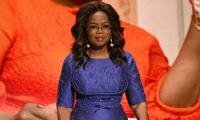I still don’t know the name of the terrorist. Nor do I care to know it. Following the carnage at two Christchurch mosques in New Zealand on Friday, that debilitating grip of anger mixed with fear, anxiety coupled with hate, crept in. I rushed, minutes after learning about the massacre, to uncover the motive, glean through the manifesto, and grapple with the vile white supremacy that drove theterrorist.
Then I stopped. I realised, after sifting through the bleak headlines and darker social media posts, that his broader objective was reeling us in. Seducing us into examining his every word, affixing our eyes to his image and video of the massacre, and most lastingly, memorising his name.
This was the bigger mission that followed the massacre. He wanted us spellbound. Lured into humanising every dimension of his being, and every vile sliver of his act, in place of the victims. Their lives, their stories, and most notably, their names. All 49 of them. Again, I stopped, turned my attention from the terrorist and fully onto the victims.
While the media was fully wed to telling the terrorist’s story, highlighting his commitment to inciting “civil war” in America and showcasing his admiration of a motley crew of white supremacists such as Dylann Roof and Anders Breivik, I embraced the Muslim victims. And began a Twitter thread to share their stories, celebrate their lives, and say their names.
If we don’t tell our stories, the history of mainstream media affirms time and again, nobody will. Muslims are typically newsworthy when villains – not victims. And Islamophobia is perpetuated by portraying Muslims, whether victims or villains, as a faceless, nameless, and monolithic bloc.
By profiling the victims, I simultaneously challenged that damning stereotype, and dodged the booby trap set by the media-hungry terrorist.
I profiled three-year-old Muca Ibrahim, the youngest of the 49 victims, who entered the mosque with his family members only to be shot. The youngest child of Somali refugees who wrongly thought New Zealand offered a safe haven from terrorism.
Not far from young Muca laid Daoud Nabi, the oldest of the victims. The 71-year-old grandfather was the terrorist’s first victim to be named publicly. Witnesses said he leapt in front of a barrage of bullets to save another worshipper’s life. He survived gunshots and war in his native Afghanistan, but was murdered in a democracy where white supremacy and Islamophobia are ferociously rising.
Nabi was not the lone hero on that fateful day. Shortly after his 20-year-old son Talha was killed, Naeem Rashid rushed towards the terrorist barehanded. Naeem marshalled infinite courage while experiencing immense pain, knowing that this act of faith would be his last. He too was shot, but steered the murderer’s gun away from others and saved lives before his final breath.
Another son, Abdullahi Dirie, was killed shortly after praying alongside his father. The precocious four-year-old insisted on attending the mosque with his family, Somali immigrants that sought a better life for their youngest and his four siblings. He ran into the mosque that Friday, wide-eyed and wide-smiled. A family member held him tightly to his chest, one final time, as they walked out of the mosque – a sacred place of worship turned into a mass murder scene.
These are only a handful of stories of the victims. The names, the faces, and the short vignettes of longer profiles and aborted lives that too often reduced into statistics. A dehumanised digit, or in this case, two – 49 – that fails to capture the depth of the pain of their loved ones, and more importantly, the depth of the lives that they led.
That depth of attention, a morbid journalistic twist indeed, is usually reserved for the terrorist. And especially, when that terrorist is a white male. We rush to learn about their every word and motive, childhood factoid and ideological inspiration. And the mainstream media makes all of this readily available for us, in turn luring our attention towards the villain and away from the victims.
If white supremacist violence and its broader aim of promoting itself through baiting the media in the wake of mass murder is to be retrenched, we must actively resist sharing, retweeting, and perpetuating the images and ideas. Turning our attention to the victims and celebrating their lives in the midst of grief is the first - and most vital - step.
This article was originally published as: ‘Humanise the victims, not the white supremacist who killed them’ by AlJazeera.com
While these films are fictional, parallels between their narratives and real world discussions about AI are hard to...
Despite their numbers, young voices are often sidelined
Depositors who want to profit from their savings will transfer their money to banks to invest in any business venture
Not surprisingly, our youth see no hope for the future
The post-election situation will be troublesome and worrisome for Modi
Most favourable concept developed so far revolves around public-private partnerships







